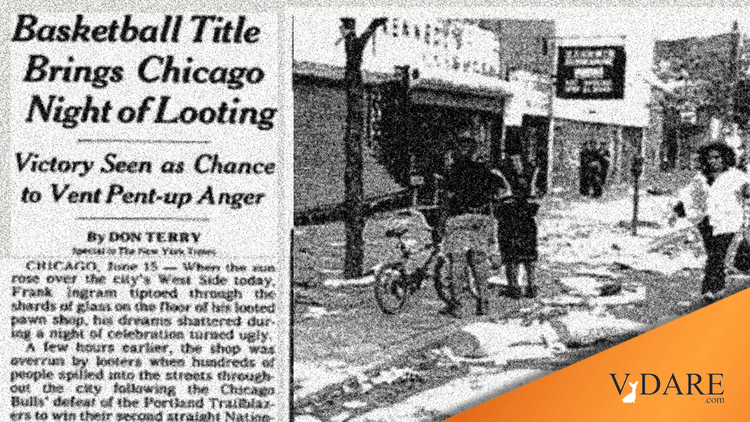MATH RIOTS PROVE FUN INCALCULABLE
by Eric Zorn
June 29, 1993
Mathematicians worldwide were excited and pleased today by the announcement that Princeton University professor Andrew Wiles had finally proved Fermat’s Last Theorem, a 365-year-old problem said to be the most famous in the field.
Yes, admittedly, there was rioting and vandalism last week during the celebration. A few bookstores had windows smashed and shelves stripped, and vacant lots glowed with burning piles of old dissertations. But overall we can feel relief that it was nothing — nothing — compared to the outbreak of exuberant thuggery that occurred in 1984 after Louis DeBranges finally proved the Bieberbach Conjecture.
“Math hooligans are the worst,” said a Chicago Police Department spokesman. “But the city learned from the Bieberbach riots. We were ready for them this time.”
When word hit Wednesday that Fermat’s Last Theorem had fallen, a massive show of force from law enforcement at universities all around the country headed off a repeat of the festive looting sprees that have become the traditional accompaniment to triumphant breakthroughs in higher mathematics.
Mounted police throughout Hyde Park kept crowds of delirious wizards at the University of Chicago from tipping over cars on the midway as they first did in 1976 when Wolfgang Haken and Kenneth Appel cracked the long-vexing Four-Color Problem. Incidents of textbook-throwing and citizens being pulled from their cars and humiliated with difficult story problems last week were described by the university’s math department chairman Bob Zimmer as “isolated.”
Zimmer said, “Most of the celebrations were orderly and peaceful. But there will always be a few — usually graduate students — who use any excuse to cause trouble and steal. These are not true fans of Andrew Wiles.”
Wiles himself pleaded for calm even as he offered up the proof that there is no solution to the equation x^n + y^n = z^n when n is a whole number greater than two, as Pierre de Fermat first proposed in the 17th Century. “Party hard but party safe,” he said, echoing the phrase he had repeated often in interviews with scholarly journals as he came closer and closer to completing his proof.
Some authorities tried to blame the disorder on the provocative taunting of Japanese mathematician Yoichi Miyaoka. Miyaoka thought he had proved Fermat’s Last Theorem in 1988, but his claims did not bear up under the scrutiny of professional referees, leading some to suspect that the fix was in. And ever since, as Wiles chipped away steadily at the Fermat problem, Miyaoka scoffed that there would be no reason to board up windows near universities any time soon; that God wanted Miyaoka to prove it.
In a peculiar sidelight, Miyaoka recently took the trouble to secure a U.S. trademark on the equation x^n + y^n = z^n as well as the now-ubiquitous expression “Take that, Fermat!” Ironically, in defeat, he stands to make a good deal of money on cap and T-shirt sales.













